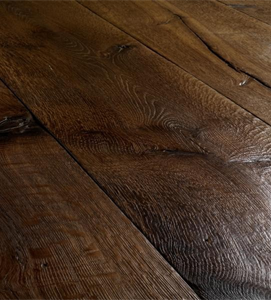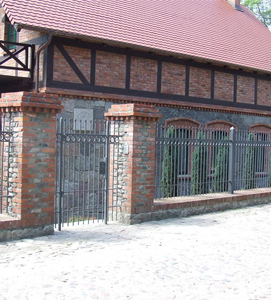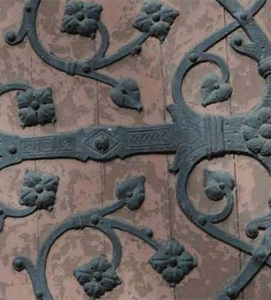Remember, each brick and beam in a heritage building contributes to the narrative of our shared past. Preserving these materials is like safeguarding pieces of history for future generations.
- What is Historical Conservation?
- How Does Historical Conservation Benefit from Using Antique Building Materials?
- Successful Uses of Antique Building Materials in Conservation Projects
- The Importance of Sourcing Authentic Antique Building Materials for Conservation
- Frequently Asked Questions
How Does Historical Conservation Benefit from Using Antique Building Materials?
Think about the Colosseum in Rome. Its conservation with antique materials helps maintain a vivid connection to its grand past. But historical conservation isn’t just about aesthetics, it’s also eco-friendly. By reusing antique materials, we can both preserve history and lessen our ecological footprint.
Moreover, antique materials aren’t just aesthetically pleasing but also vital for structural integrity. They’ve stood the test of time, making them perfect for restoration projects. It’s a win-win situation: we bridge the past and the future, preserving our heritage while being sustainable. So, next time you appreciate a historic building, ponder the antique materials used. They’re not just bricks and mortar – they’re the threads of our shared history.

Successful Uses of Antique Building Materials in Conservation Projects
Ever gazed at New York’s Flatiron Building? Its limestone and terracotta facade takes us back in time, blending the past with the present seamlessly. That’s the charm of using materials that echo the building’s original era.
Another great example is the restoration of the Palace of Westminster in London. Who could forget its distinctive Perpendicular Gothic style? By sourcing antique stone similar to the original, conservationists ensured the palace retained its iconic style and spirit.
And then there’s the Christ Church Cathedral in New Zealand. Despite the devastating earthquake, using antique materials in its restoration has helped it rise from the ashes, retaining its Gothic Revival style, while standing strong against future seismic events. See the graph showing the cost of new building materials.

Remember, it’s not just about matching the old with the old. Using antique materials in new ways, like in the Eden Project in the UK, where reused timber creates a unique biomes structure, showcases the versatility of these materials.
Successful use of antique building materials is more than just a nod to the past. It’s about embracing the stories these materials carry, preserving their character, and imbuing new life into structures. It’s about celebrating the journey of these materials from the past, while paving the way for a sustainable future. So, the next time you look at a historic structure, try to read the stories etched in its antique materials. They carry a legacy that’s worth preserving.
The Importance of Sourcing Authentic Antique Building Materials for Conservation
Have you ever noticed how a vintage photo has a different charm compared to a digital snapshot? That’s the allure of authentic antique building materials. They capture the essence of a time gone by.
Take the Louvre Museum in Paris, for example. Preserving its antique sandstone exterior is key to maintaining its historic charm. The same goes for the restoration of the historic Alhambra Palace in Spain. Using locally sourced, antique marbles and stones has helped maintain its iconic Andalusian character.
In a world where knock-offs are common, it’s crucial to invest time and effort into sourcing authentic materials. Why? Because these materials respect the integrity of the original construction. They’ve weathered the same years, experienced the same environment, and have a continuity that modern substitutes just can’t replicate.
And let’s not forget about sustainability. By reusing authentic materials, we’re giving them a second life, reducing waste, and promoting a circular economy.
So, sourcing authentic antique building materials isn’t just about aesthetics, it’s about maintaining the authenticity and soul of our built heritage. It’s about weaving a continuous thread from the past to the future, respecting the tale every brick and beam has to tell. Isn’t that a story worth preserving?
Are you looking for old building materials?
We are a company that obtains materials from Central and Eastern Europe, which allows us to offer you products with parameters and aesthetic qualities unprecedented in other regions of Europe.

Why is Historical Conservation Important?
Historical conservation is crucial for several reasons. It allows us to maintain a physical connection to our past, providing tangible evidence of historical events and cultures. This connection enhances our understanding of history, enriches our cultural heritage, and promotes educational and research opportunities. It also contributes to community identity, enriches the local tourism industry, and often encourages sustainable practices like reuse of materials and buildings.
How is Historical Conservation Carried Out?
Historical conservation typically involves a thorough process, starting with research to understand the significance and original condition of the site or artifact. Conservation methods may include stabilization to prevent further decay, repair of damaged parts, or careful restoration to an earlier state. In some cases, the goal is to preserve the current state of an object or site, rather than attempting to restore it to its original appearance. All these efforts usually require a multidisciplinary approach, involving experts from fields like history, archaeology, architecture, chemistry, and art.
What Role Do Antique Building Materials Play in Historical Conservation?
Antique building materials play a critical role in historical conservation. Using period-appropriate materials is vital for maintaining the integrity and authenticity of historical structures during restoration or conservation efforts. In addition to preserving the aesthetic and historical value of the building, these materials can also have unique properties that modern substitutes cannot replicate. This could include anything from specific types of wood, stone, or brick to historic techniques for creating glass or ceramics.
What are the Challenges in Historical Conservation?
The process of historical conservation often presents various challenges. These might include sourcing the appropriate materials for restoration, understanding the original techniques used to create or build the object or structure, and balancing the need to preserve historical significance with the needs of modern use. Additionally, conservation work can be expensive and time-consuming, and may also be hampered by legal, administrative, or ownership complexities.
Contact Us
Old brick patio ideas – revamping your space
Picture your old brick patio, a veritable tableau of weathered and worn stones that may appear bereft of aesthetic appeal. Yet, this space should not be perceived as beyond redemption, but rather as...
Comparing the costs of reclaimed materials vs new materials
Are you interested in sustainability and cost-effectiveness? Then you should definitely read the text about "Comparing the costs of reclaimed materials vs new materials." This text delves into the...
Sources of reclaimed materials
Reclaimed materials are materials that have been salvaged or reused from previous structures or products. These materials are typically repurposed or regenerated to create new items, reducing the...







